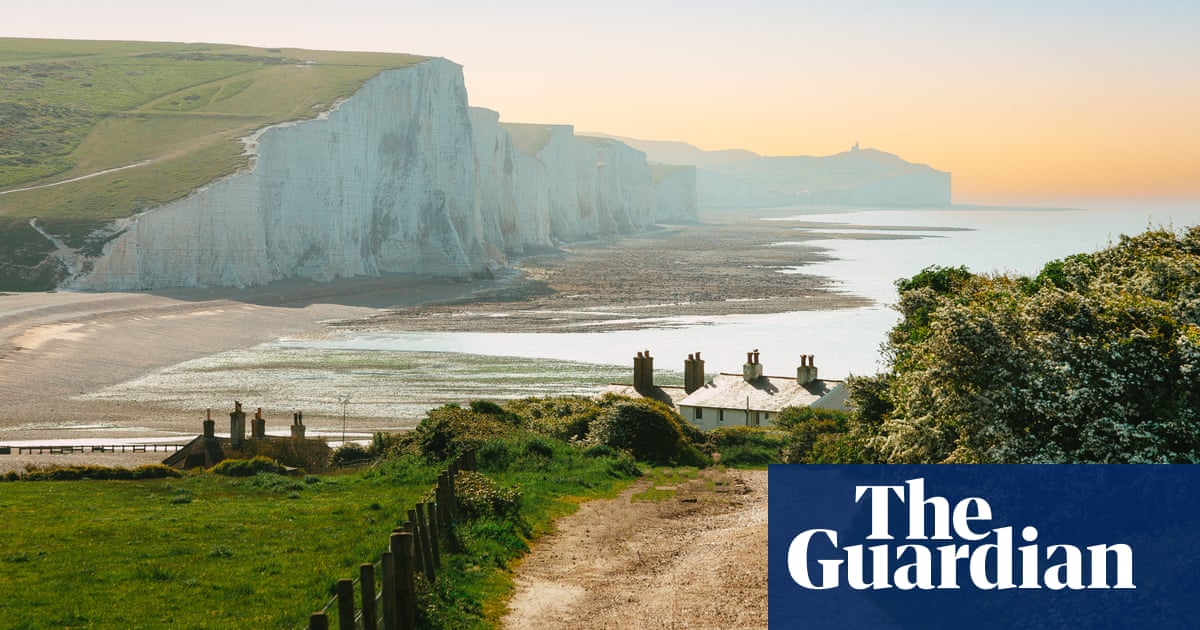From the pebble beach at Cuckmere Haven, it’s a steep climb up a well-trodden track to get up on to the cliffs but the reward is one of the most exhilarating views the British coast has to offer – the dazzling white chalk faces of the Seven Sisters stretching into the distance. I have seen these cliffs in sunshine, mist and rain, from above, below and from the sea, and they never fail to make my heart beat faster. Below us lies the Channel, a soft milky blue this morning, the hazy shape of a ferry fading into the horizon like a ghost ship. Behind us is rolling grassland as far as the eye can see.
These are the “blunt, bow-headed, whale-backed Downs” that Rudyard Kipling conjured so vividly in his poem Sussex, written in 1902 when he was living with his family in nearby Rottingdean. Kipling would still recognise this landscape, “half-wild but wholly tame”, but it could so easily have been a different story.
Ten miles west of here is Peacehaven, a sprawling cliff-edge development of bungalows, built on land that was parcelled up as cheap housing plots after the first world war. Fearing that a similar fate lay in store for the rest of this coastline, a group of local campaigners founded the Society of Sussex Downsmen in 1924 (now called Friends of the South Downs) and raised the money to buy 200 hectares (480 acres) of land between Seaford and Eastbourne from a building syndicate. The land was then handed over to the National Trust. Kipling’s poem was used as a call to arms in one of the fundraising pamphlets.
Today, the iconic white cliffs and surrounding downland come under the protective umbrella of Seven Sisters country park, one of the last stretches of undeveloped coast in the south-east. Three years ago, ownership of the park was transferred from East Sussex county council to the South Downs national park authority, bringing another layer of protection and some much-needed investment. About £2m has been spent so far upgrading the visitor centre, managing the chalk grassland to improve biodiversity and converting three 19th-century farm cottages into self-catering accommodation – the first of its kind within the park. We are going to be the first guests in one of the newly renovated cottages.
While the rest of my family settle in, I’ve arranged to meet ranger Lawrence Leather for a quick tour of the country park. It’s a sunny bank holiday weekend and the…
Click Here to Read the Full Original Article at Travel | The Guardian…
